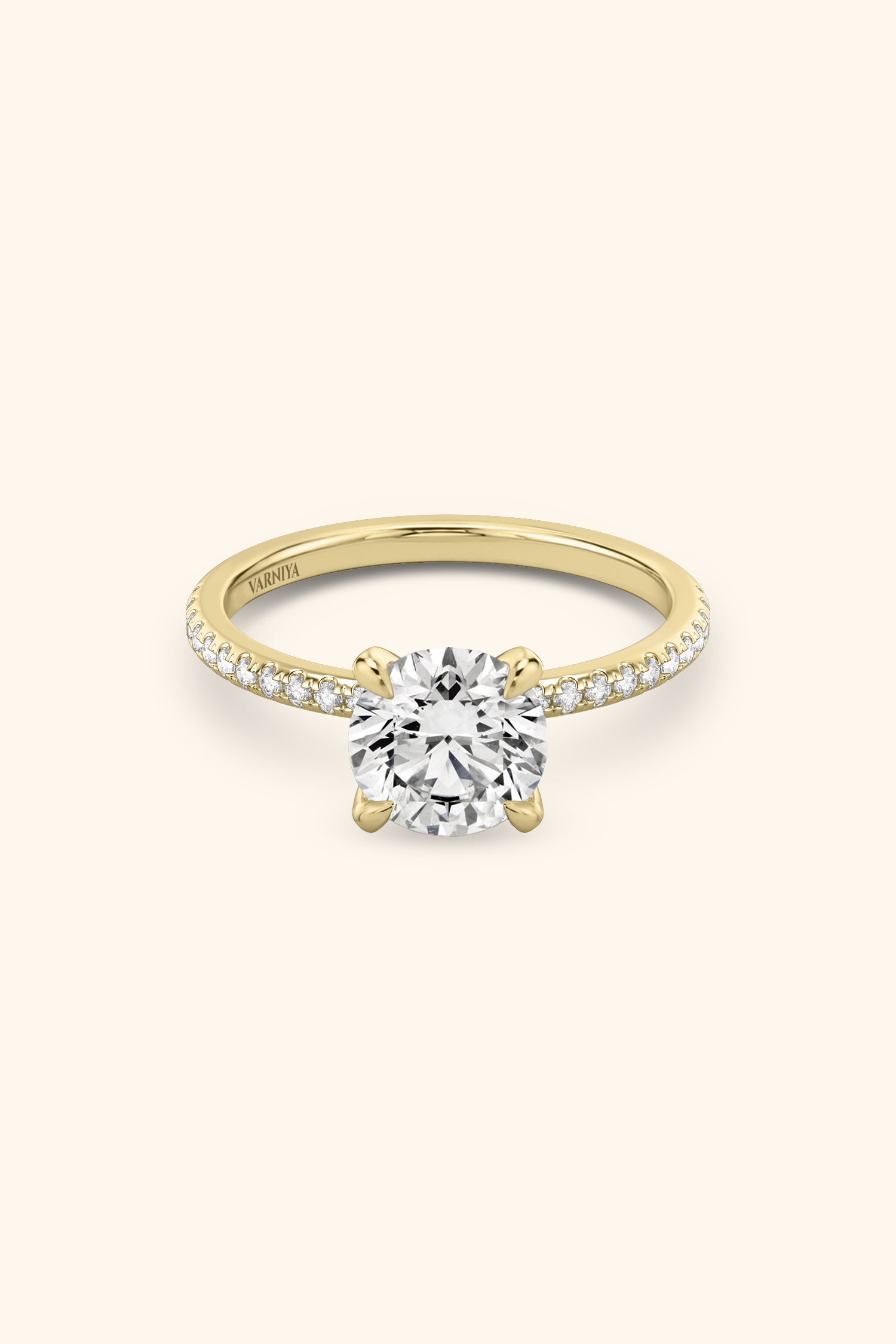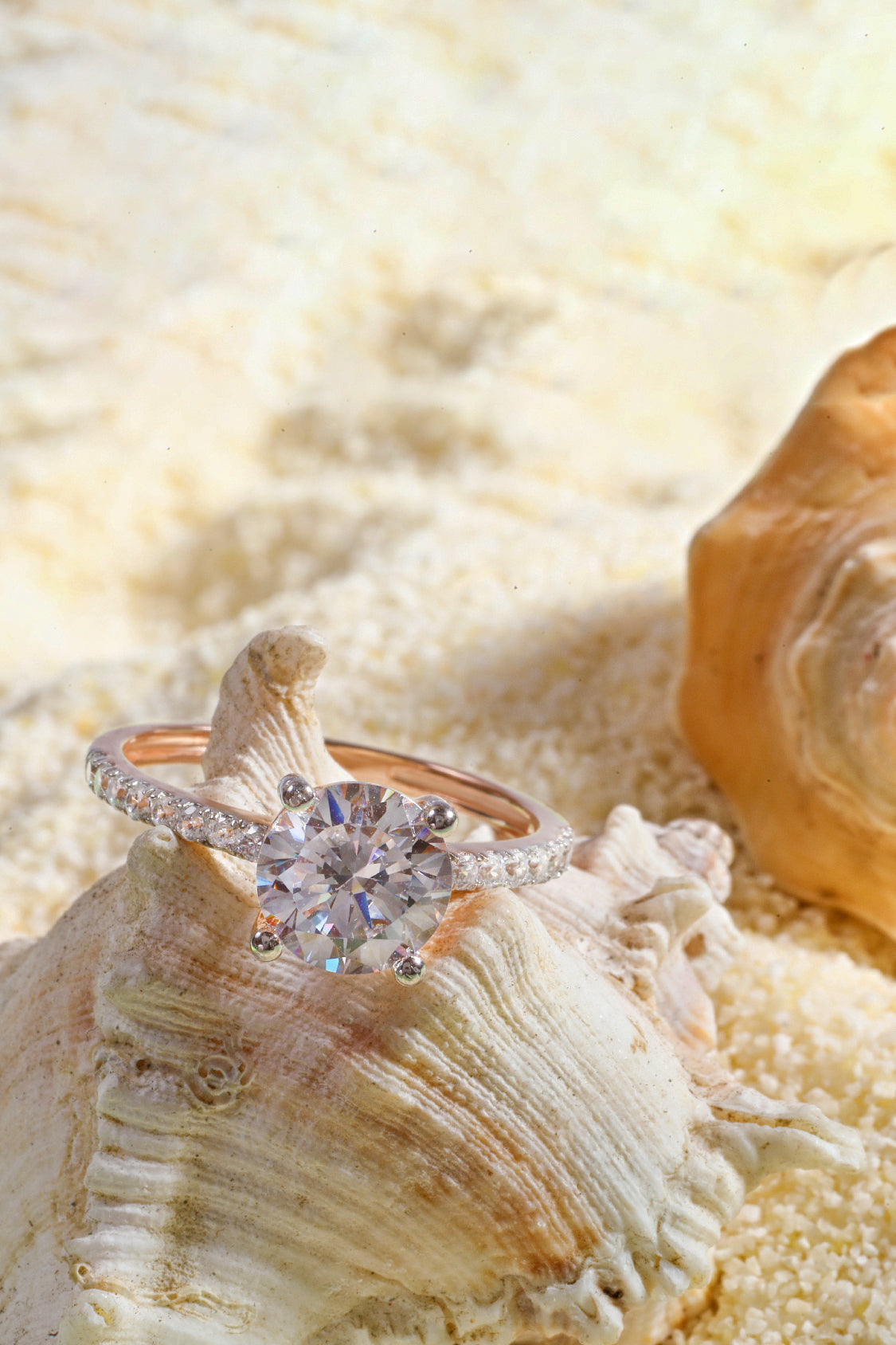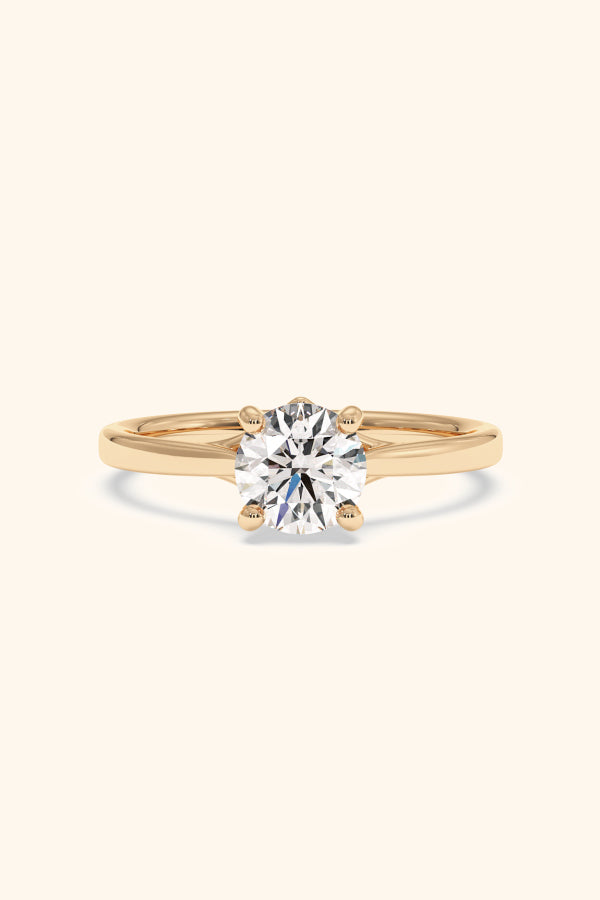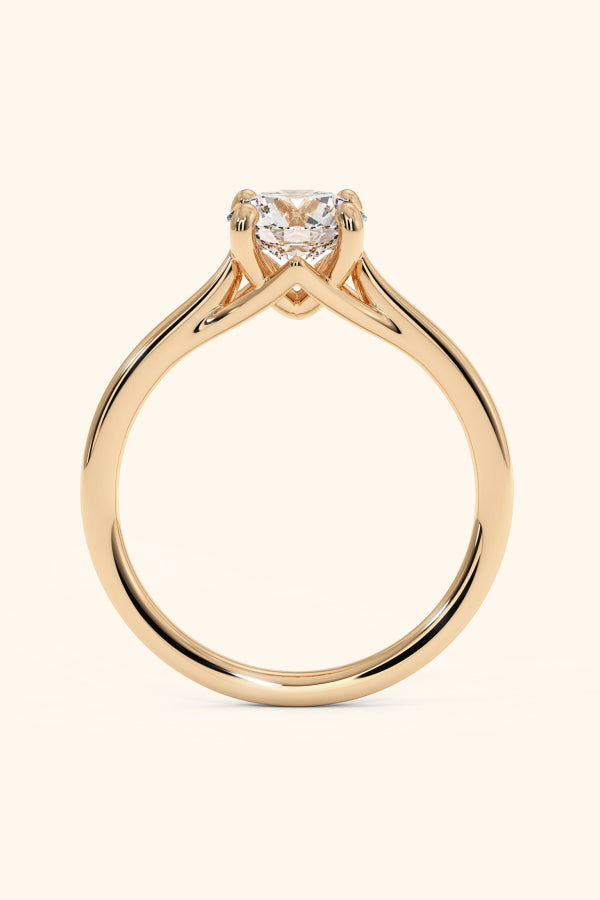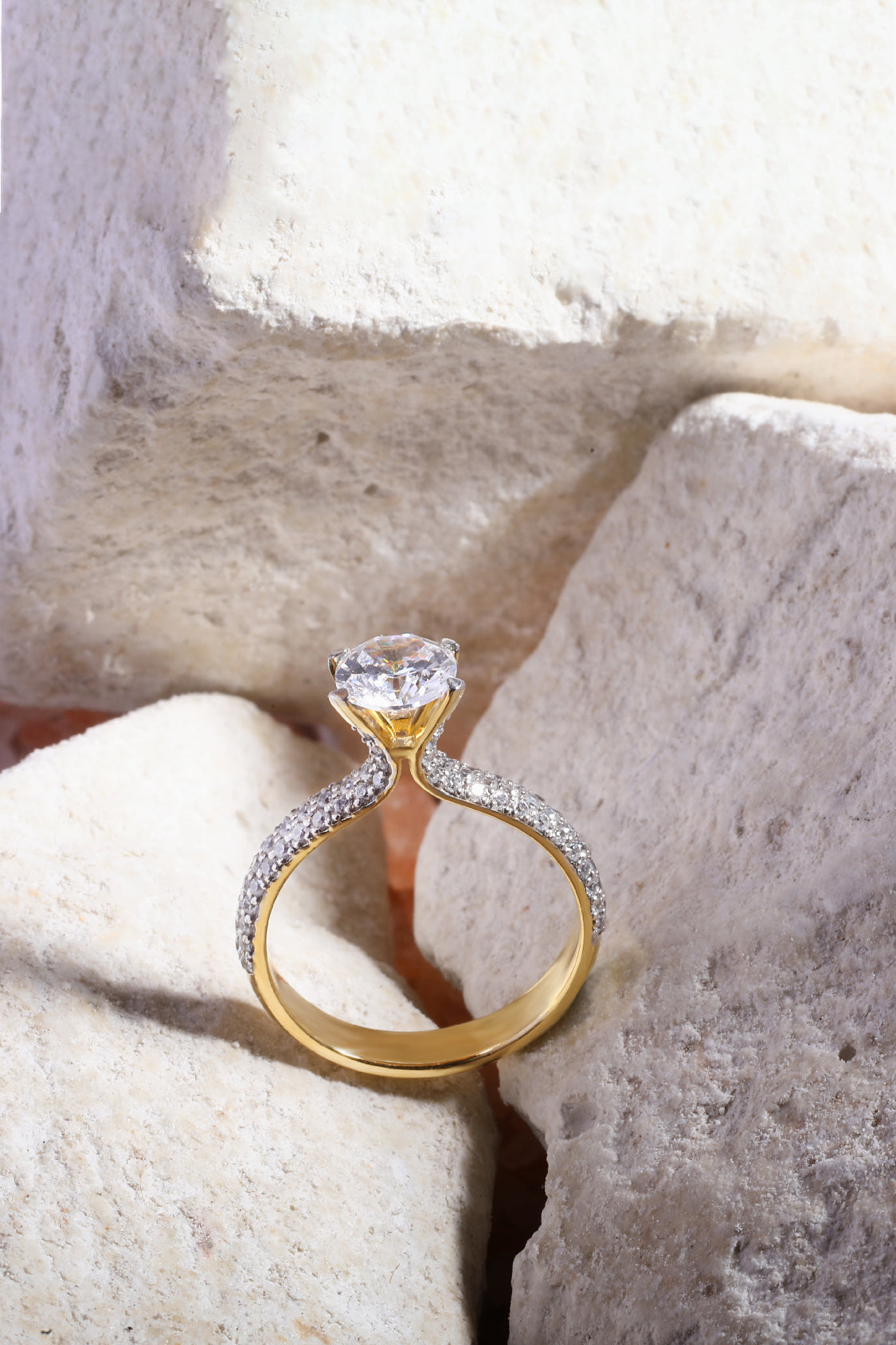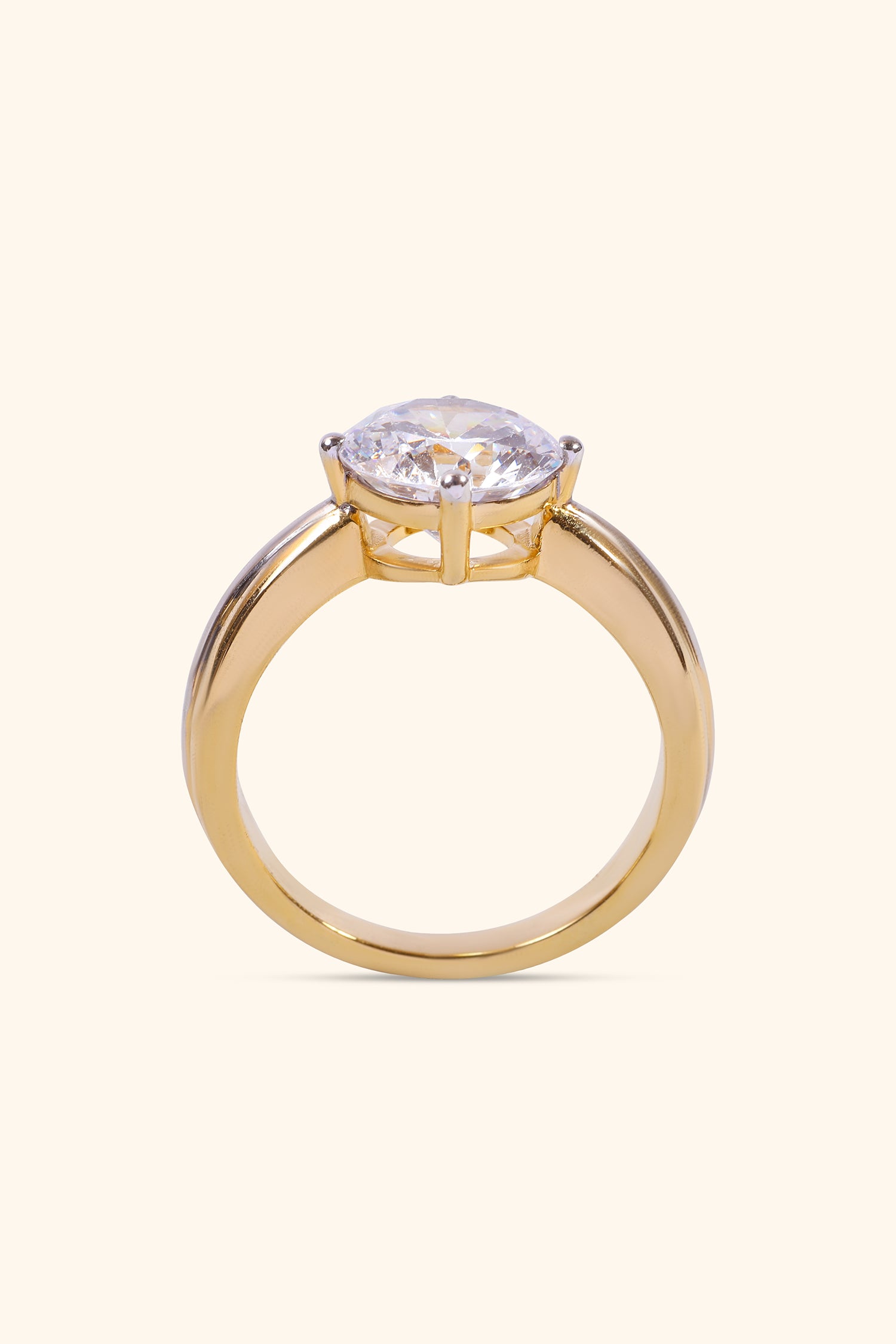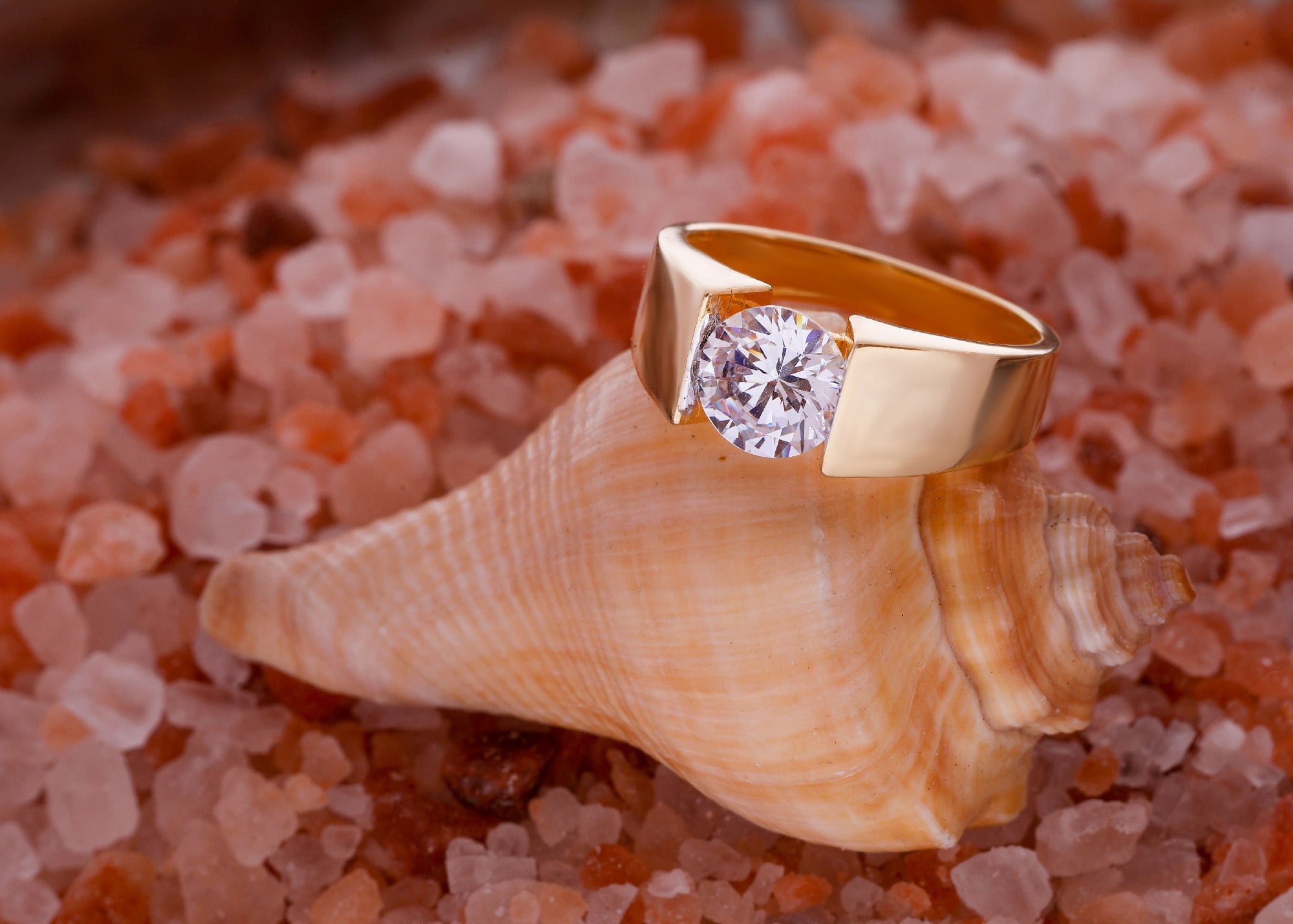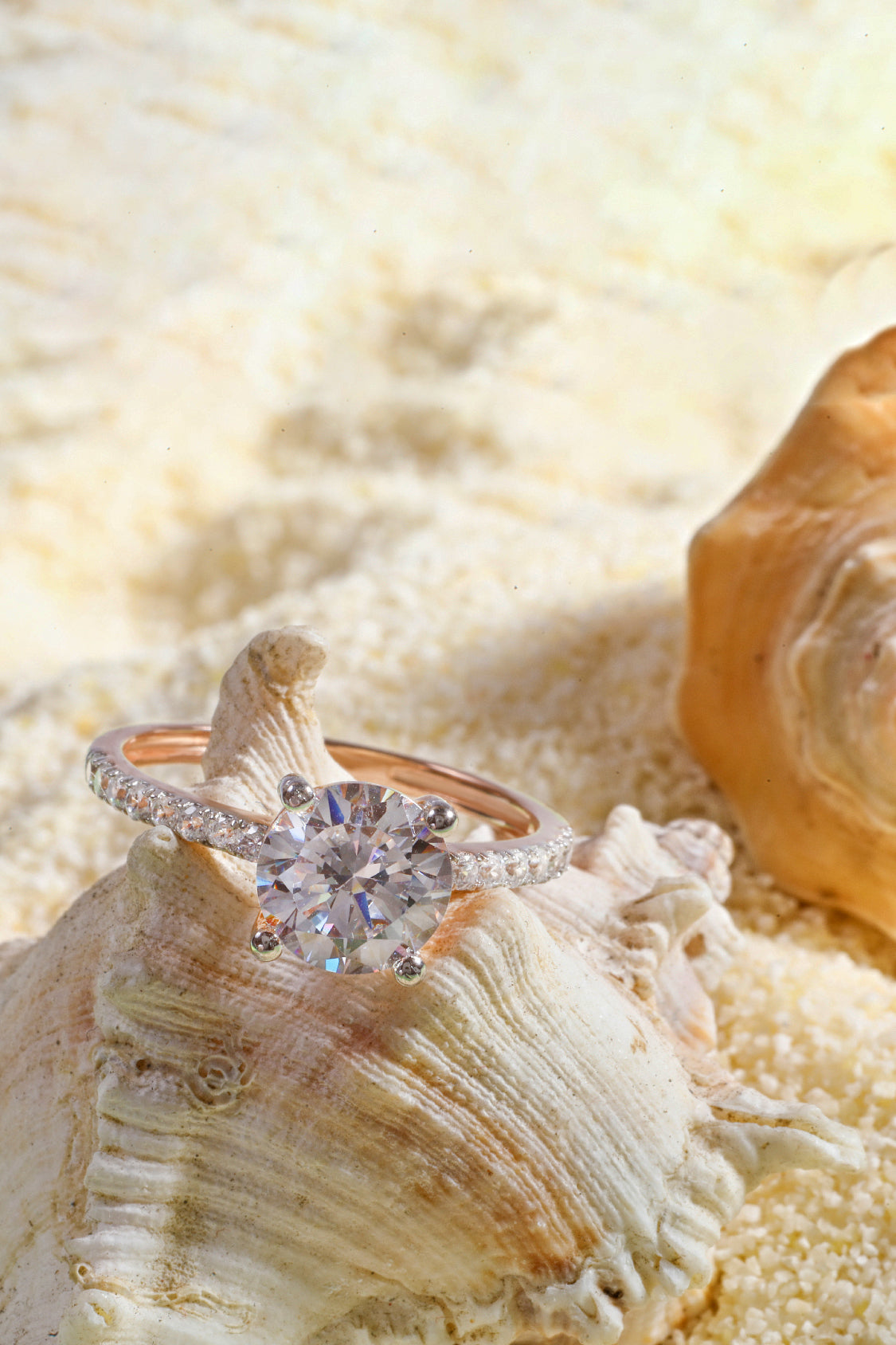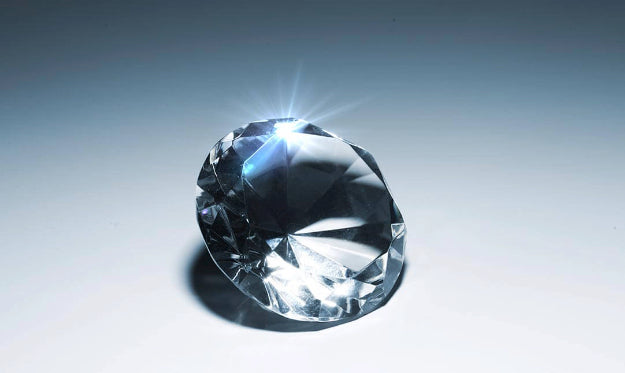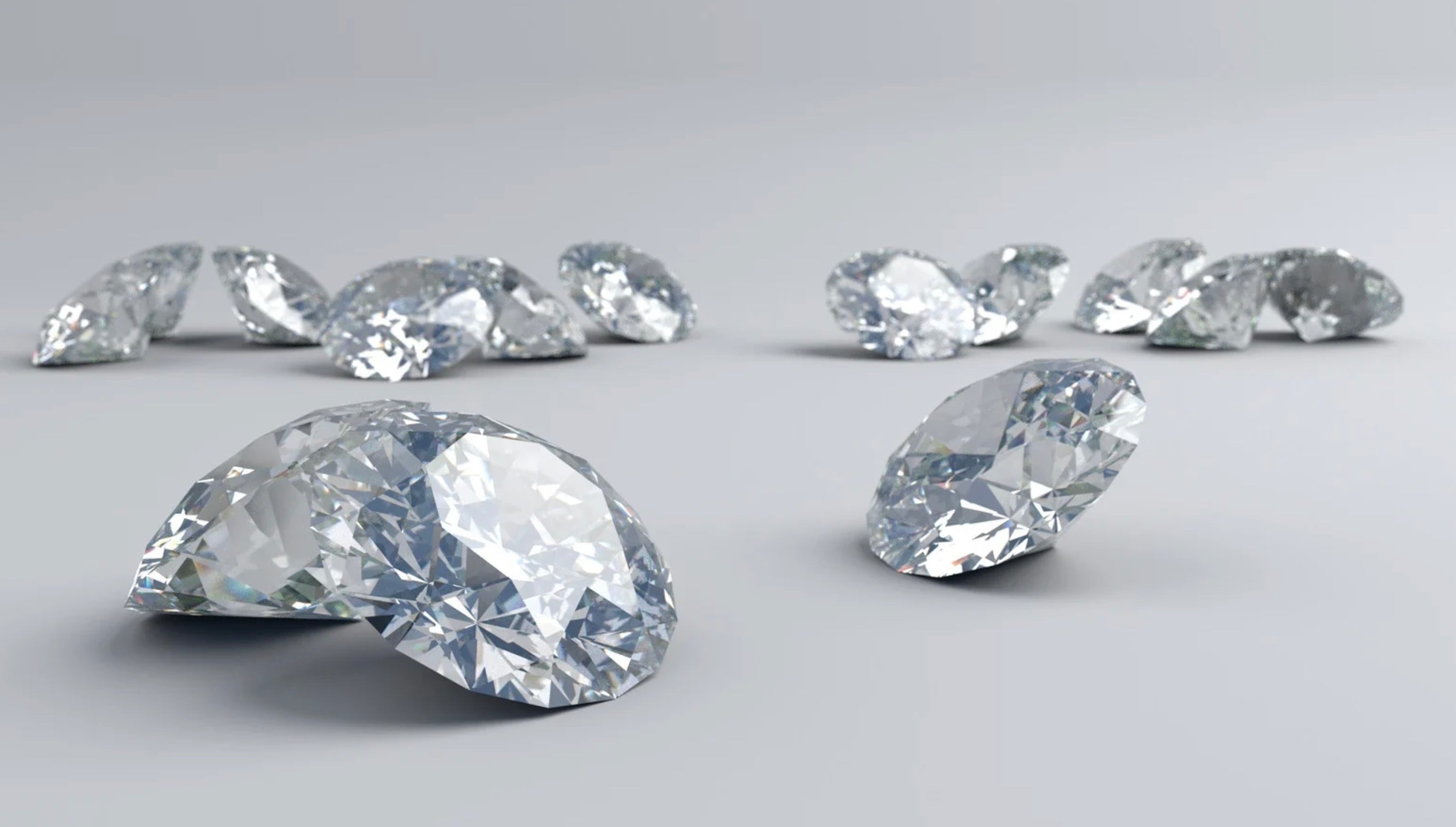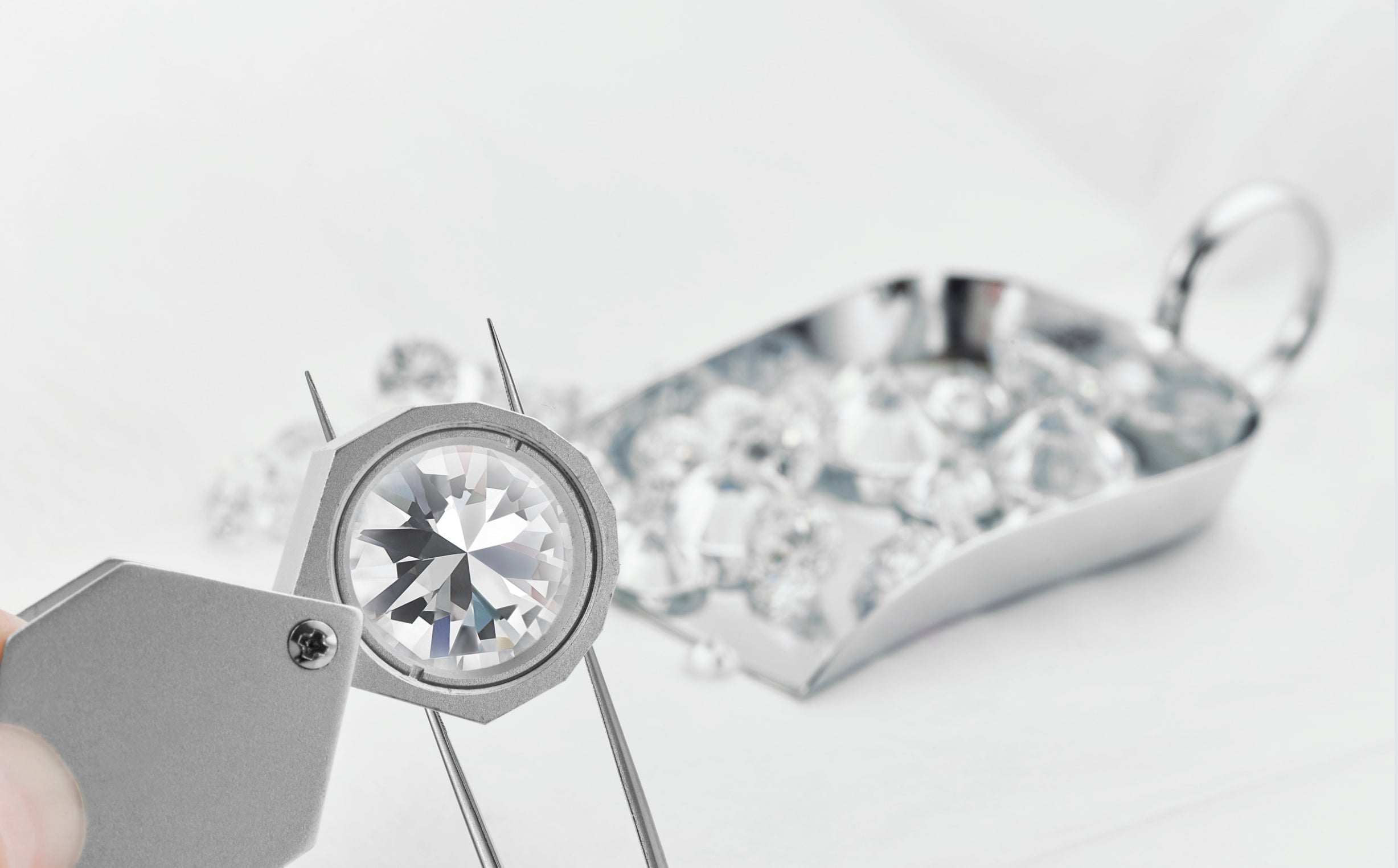
Learn Lab Grown Diamond Grading Standards: A Quick Guide
Before you buy, know the facts. Discover how lab grown diamond grading works and what every smart shopper should look for.
Buying a lab grown diamond? Don’t wing it—grading matters. Just like natural diamonds, lab diamonds are graded for cut, color, clarity, and carat weight.
But here’s the twist: not all grading is created equal. According to a 2023 report from the GIA, over 40% of buyers don’t fully understand diamond grading before purchase. That’s a recipe for regret.
In this quick guide, we’ll break down everything you need to know. Whether you’re shopping for an engagement ring or treating yourself, you deserve to know exactly what you’re paying for.
What Is Lab Grown Diamond Grading?
Each lab-grown diamond begins with a small diamond seed that eventually develops into a dazzling gem. Diamond grading functions much like a report card. Experts assess each diamond based on cut, color, clarity, and carat weight—collectively known as the 4Cs. Each part tells you something different:
-
Cut shows how shiny it is.
-
Color shows how white or tinted it looks.
-
Clarity checks for tiny marks inside or outside.
-
Carat weight tells how big it is.
Understand Your Diamond, Love Your Purchase. Explore Expertly Graded Diamonds at Varniya Today!
Why Is Grading Important for Lab Diamonds?
1. It Tells You What You’re Really Buying: Without grading, a diamond’s quality is just a guess. A report confirms its cut, clarity, color, and carat.
2. It Protects You from Overpaying: Two diamonds may look the same, but one could be lower quality. Grading ensures you’re paying the right price for what you get.
3. Lab Diamonds Still Vary in Quality: Just because it’s lab grown doesn’t mean it’s flawless. Grading separates the good from the great.
4. It Helps You Compare Diamonds Easily: Shopping around? Grading reports make it easy to compare diamonds side-by-side with clear numbers and facts.
5. It Affects Resale and Insurance Value: Want to insure or resell your diamond later? You'll need a recognized grading report for proper valuation.
Who Does the Diamond Grading Report and Certifications
Understanding How Experts Grade Lab-Grown Diamonds
1. International Gemological Institute (IGI)
IGI is one of the most popular grading labs for lab diamonds. It issues a laboratory grown diamond report that covers the full grading standards. You’ll find grades for everything—diamond clarity grade, diamond color, and even color grading.
IGI uses the same tools and same manner as they do for natural diamonds. That means fair and equal checks for both.
2. Gemological Institute of America (GIA)
GIA is known around the world. It’s trusted for its strict grading system. When GIA grades a grown diamond, the results are detailed and reliable. Their reports show the grades d through grade g, and whether a diamond falls into the colorless category or near colorless category.
According to GIA, “Every diamond, whether lab created or natural, deserves honest grading.” Their grading is science-based and highly respected.
3. GCAL (Gem Certification and Assurance Lab)
GCAL goes beyond grading. It also checks the quality assessment and promises that the report matches the diamond you buy. GCAL uses advanced machines to check how much your diamond sparkles.
GCAL says, “Without a grading report, you’re buying blind.”
4. HRD Antwerp
HRD Antwerp is another trusted expert for grading lab diamonds. They provide clear grading reports using advanced technology. HRD carefully examines each diamond’s clarity, cut grade, and color grading. Their labs ensure accurate grading by using the same tools as used for natural diamonds.
"Our goal is to give buyers full confidence," says HRD Antwerp. Their reports clearly state whether diamonds are completely colorless or lightly tinted, helping you make smarter buying decisions.
5. Sarine Technologies
Sarine Technologies uses modern machines to grade lab grown diamonds. Their tools can see things the naked eye might miss, like tiny flaws or slight color changes. Sarine grades diamonds based on their clarity and carat, diamond cut, and diamond color.
"We use technology to provide the most accurate diamond grading," Sarine explains. They make sure you know if your lab diamond is high quality or just looks good from far away.
Are Lab Grown Diamonds Graded the Same as Natural Diamonds?
| Grading Aspect | Natural Diamonds | Lab Grown Diamonds |
|---|---|---|
| Grading Standards (4Cs) | ✅ Standard 4Cs grading: Cut, Color, Clarity, Carat | ✅ Same 4Cs grading as natural diamonds |
| Certification Labs | ✅ IGI, GIA, GCAL, HRD Antwerp, AGS | ✅ IGI, GIA, GCAL, HRD Antwerp |
| Quality Range | ✅ Wide quality range from low to flawless | ✅ Also wide quality range, but typically higher clarity and color achievable |
| Identification on Certificates | ✅ Clearly marked as “Natural Diamond” or simply “Diamond” | ✅ Clearly labeled as “Laboratory-Grown” or “Lab Grown” diamond |
| Laser Inscription | ✅ Often laser-inscribed for verification | ✅ Usually laser-inscribed for easy identification |
| Price Comparison (Similar Quality) | 💰💰💰 Premium price (due to rarity) | 💰 Significantly less expensive for comparable quality |
| Resale Value | ✅ Typically higher resale value due to rarity and market perception | 🔸 Lower resale value, but increasing market acceptance |
The 4Cs in Lab Grown Diamond Grading: A Breakdown
1. Carat Weight
Have you ever wondered why some diamonds look bigger than others? It's because of their carat weight. Carat weight measures how heavy a diamond is. One carat equals 200 milligrams, roughly the weight of a small paperclip.
Here's something interesting: a diamond's size doesn't always match its carat weight. For example:
-
A heavier diamond might appear smaller if it has a deeper cut.
-
Different shapes can make diamonds of the same weight appear different sizes.
Lab grown diamonds, just like natural diamonds, use carat weight for measurement. Some people think lab grown diamonds might weigh differently, but that's not true. Lab diamonds are physically identical to mined diamonds, meaning they weigh exactly the same when their carats match.
Why does carat weight matter?
-
Generally, the heavier the diamond, the more expensive it is.
-
Two diamonds might look similar, but the heavier one often costs much more.
-
The price of diamonds rises quickly at certain carat weights. For instance, a 1-carat lab grown diamond doesn't cost just twice as much as a 0.5-carat diamond—it can cost three or four times more! According to the Gemological Institute, larger diamonds are rarer, even when lab created.
Here are some practical tips when choosing a diamond based on carat weight:
-
Don't only focus on size; consider clarity and carat together. A smaller diamond with higher clarity can sparkle more.
-
Diamonds graded based on clarity and carat often provide better value.
-
Diamond shapes affect appearance. Round shapes might look larger, while oval or pear shapes often appear bigger to the naked eye.
-
If you're budget-conscious, select a diamond slightly below popular carat weights like 1 or 2 carats. For example, choosing a 0.95-carat diamond instead of exactly 1-carat can significantly lower the price without a noticeable difference in size.
2. Diamond Cut Grade
Have you noticed some diamonds sparkle more than others? That sparkle mostly comes from how well the diamond is cut. Diamond cut grade measures how carefully and precisely a diamond is shaped and polished. This isn't about the diamond's shape, like round or oval, but how perfectly it's cut.
When a diamond is cut just right:
-
It sparkles brightly.
-
It reflects light from every angle.
-
It appears lively and vibrant.
If a diamond is poorly cut:
-
It can look dull.
-
It won’t sparkle as much, even if it’s big or very clear.
Lab grown diamonds are real, and their cut grade is measured just like mined diamonds. Experts use controlled conditions to see how well each diamond handles light. They look at:
-
Relative lightness
-
Brightness
-
Sparkle
The grading report for your lab created diamond will include the cut grade. Cut grades include:
-
Excellent (highest grade)
-
Very Good
-
Good
-
Fair
-
Poor
3. Diamond Color Grading
Diamonds, including lab grown diamonds and natural diamonds, are graded based on color. The less color a diamond has, the more valuable it usually is.
Experts grade lab grown diamonds on a color scale. This scale starts at colorless and goes down to yellow or brown tint. A colorless diamond has no visible color, even under bright lights. Diamonds are graded from D to Z:
-
Grades D to F: These are colorless diamonds. They look clear and are very valuable.
-
Grades G to J: These are near colorless. They might have a very slight color, but it’s hard to see.
-
Grades K to M: These diamonds have a slight yellow tint that's visible.
-
Grades N to Z: These diamonds show stronger yellow or brown colors.
The Meaning Behind Grades: From Grade G to Grades D
| Diamond Color Grade | What Does It Mean? | Appearance to the Eye | Value for Buyers |
|---|---|---|---|
| 🟢 Grade D | Completely Colorless (Highest Grade) | Purely clear, icy-white appearance | Premium quality, rare, highest price 💰💰💰 |
| 🟢 Grade E | Colorless, virtually indistinguishable from D | Clear white, nearly identical to Grade D | Exceptional value, slightly less costly 💰💰 |
| 🟢 Grade F | Still considered Colorless | Visually colorless, looks pure and clear | Great quality & value combination 💰💰 |
| 🔵 Grade G | Near-colorless, slight warmth barely noticeable | Nearly colorless, subtle warm hue only visible when compared side-by-side | Excellent choice for balancing beauty & budget 💰 |
For most people, a diamond in the near colorless category (grade G to J) is a smart choice. They look almost colorless but cost much less than completely colorless ones.
Fancy Colored Diamonds: How Are They Graded?
Not all color in diamonds is bad! Fancy colored diamonds are special because their color is beautiful and valuable. These diamonds come in many colors like blue, pink, green, or even red. Lab grown fancy colored diamonds and natural fancy colored diamonds are graded differently.
Fancy colored diamonds are graded based on:
-
Hue: This means the main color you see.
-
Tone: This shows how light or dark the color appears.
-
Saturation: This measures how strong or weak the color looks.
Fancy colored diamonds with strong, vibrant colors are usually more valuable. Diamonds that appear very light or slightly included might be less expensive but can still look beautiful.
4. Diamond Clarity Grade
Have you ever looked closely at a diamond? You might notice tiny marks or specks inside. These little marks are called inclusions. Diamond clarity grade tells us how clear a diamond is. Diamonds with fewer or no inclusions have higher clarity and are usually worth more.
Lab grown diamonds, just like mined diamonds, are graded on clarity. Experts use special tools to check diamonds under controlled conditions. They look carefully to find these tiny marks. If you can't see these marks with just your eyes, they're called "eye-clean."
Diamond clarity grading follows this scale:
-
Flawless (FL): No marks visible even under magnification.
-
Internally Flawless (IF): Tiny marks only on the surface, not inside.
-
Very, Very Slightly Included (VVS1 & VVS2): Inclusions are so small, they're hard to spot even under magnification.
-
Very Slightly Included (VS1 & VS2): Minor inclusions that are somewhat easy to see with magnification.
-
Slightly Included (SI1 & SI2): Marks are easily seen with magnification, and sometimes visible to the naked eye.
-
Included (I1, I2, I3): Clear inclusions easily visible without magnification.
Here are some tips for choosing clarity:
-
Look for diamonds graded VS or SI if you want good clarity at a fair price.
-
Slightly included diamonds can be a great choice if the marks aren't easily seen.
-
Remember, tiny inclusions often can't be seen once the diamond is set in jewelry.
Choosing the Right Diamond: Quality Assessment Tips
1. Don’t Just Chase Size
-
When buying lab grown diamonds, bigger isn’t always better. A grown diamond that's large but poorly graded can lack sparkle and beauty.
-
Remember, quality matters more than size. A smaller lab created diamond with a high-quality grade can outshine a bigger one with lower grades.
2. Read the Grading Report Carefully
-
Always ask for a laboratory grown diamond report. This grading report shows details like diamond color, clarity, cut, and carat. It helps you confirm if your diamond is real and meets quality standards.
-
The grading report also tells you if your diamond is created by HPHT diamonds or CVD diamonds, making sure you get exactly what you pay for.
3. Cut Impacts Sparkle the Most
-
A diamond’s sparkle depends mostly on its cut. Even the best color grading or clarity can't help if the cut is poor. Good cutting makes lab grown diamonds real show their best sparkle.
-
Experts at the Gemological Institute say, "Cut directly affects a diamond's beauty more than any other factor." So, always pick diamonds graded "Excellent" or "Very Good" in cut.
4. Match Color and Clarity to Your Setting
-
Think about your jewelry setting when selecting for clarity and color lab grown diamonds. For example, yellow or rose gold settings can hide lower grades of color, making near-colorless diamonds look great.
-
If you're choosing white gold or platinum, stick to higher color grades for a clearer stone's color. Making informed choices based on your jewelry setting helps you get the best look and value.
5. Stick to G–J for Better Value
-
When picking lab grown diamonds, consider colors graded G through J. Diamonds in this color range are near colorless, offering excellent value.
-
These diamonds look almost as clear as higher grades but cost less. This makes your grown diamond look beautiful without hurting your budget.
6. Use 10x Magnification to Check Clarity
-
Always check the clarity of laboratory grown diamonds using a magnifying glass that enlarges ten times. This helps you spot tiny inclusions that you can't see with just your eyes.
-
Even slightly included diamonds might appear flawless without magnification. Using the same manner as experts ensures you're choosing the best diamond clarity.
7. Verify the Laser Inscription
-
Real lab grown diamonds usually have a laser inscription. This tiny marking proves the diamond's identity. It often matches a number in the laboratory grown diamond report.
-
Ask the seller to show you this inscription. It helps confirm that your diamond is genuine, especially in extreme conditions where authenticity matters most.
8. Trust Sellers Who Provide Certification Upfront
-
Good sellers always give you diamond certifications upfront. These certificates come from trusted labs and clearly show grading standards like color grading, clarity, and carat weight.
-
Certifications also ensure your diamond is physically identical to mined diamonds. Choosing a seller who provides clear, upfront certification makes buying safe and stress-free.
Turn Your Knowledge into the Perfect Diamond. Shop Smart at Varniya—Certified Quality Awaits!
Understanding lab grown diamond grading standards gives you the power to shop confidently. Remember, a reliable grading report and smart quality checks protect your investment and ensure lasting satisfaction. Now, you're fully prepared—go find the perfect diamond that matches your style and budget!
Empower your diamond purchasing journey with Varniya's certified lab-grown diamonds. Start your search today.


